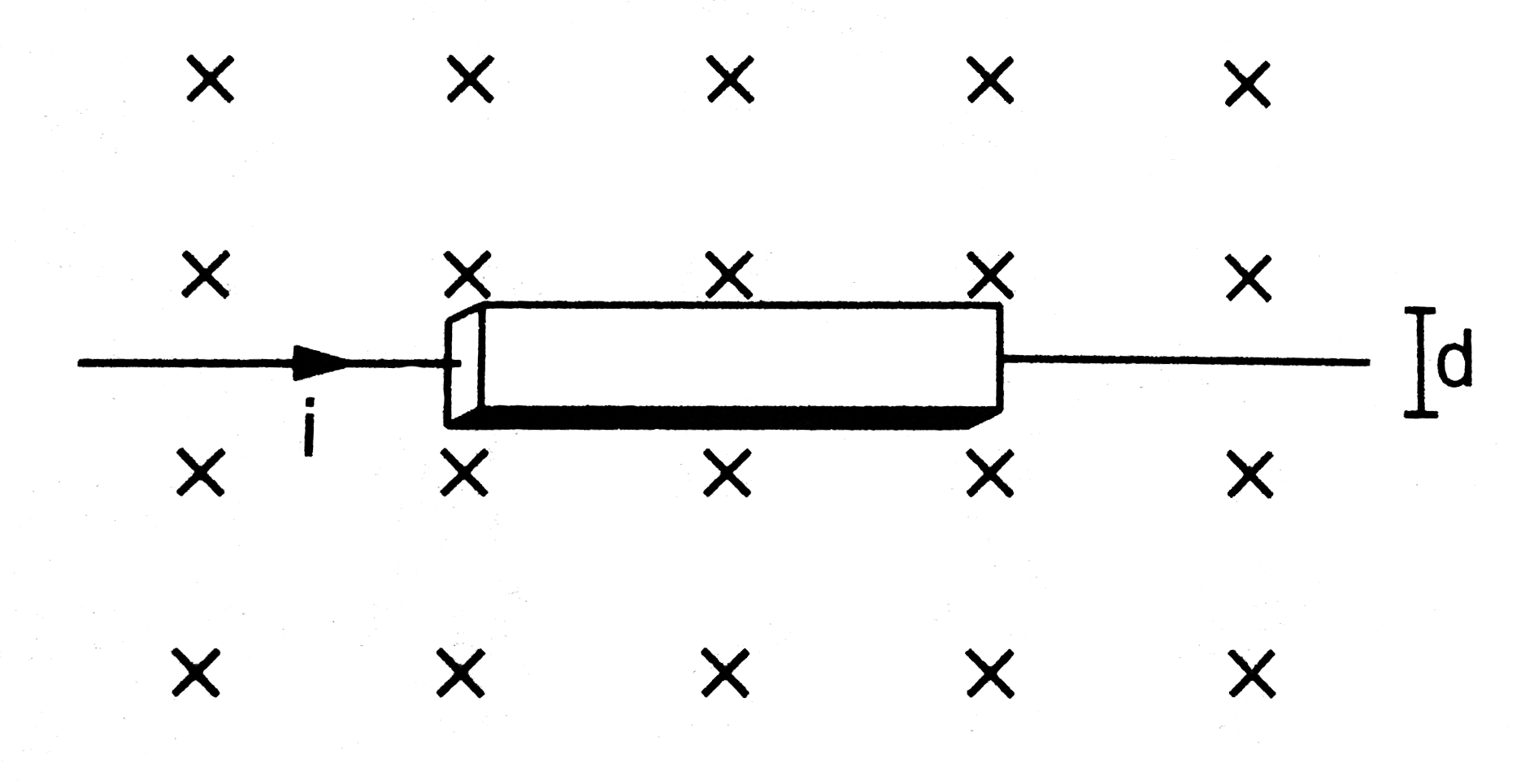Consider the situation when an electric field E is present in a conductor. Acceleration a of the free electrons of the conductor due to this field is
a=eEm
a=eEm
a=Eem
a=−eEm
The correct Answer is:D
To find the acceleration a of the free electrons in a conductor when an electric field E is present, we can follow these steps:
Step 1: Understand the Force on an Electron
When an electric field E is applied to a conductor, it exerts a force on the free electrons present in the conductor. The force F on an electron can be expressed using the equation:
F=Q⋅E
where Q is the charge of the electron. For an electron, the charge Q is equal to −e (where e is the elementary charge, approximately 1.6×10−19 coulombs).
Step 2: Substitute the Charge of the Electron
Substituting the charge of the electron into the force equation, we have:
F=−e⋅E
This indicates that the force acting on the electron is in the direction opposite to that of the electric field due to the negative charge of the electron.
Step 3: Apply Newton's Second Law
According to Newton's second law, the force acting on an object is also equal to the mass of the object multiplied by its acceleration:
F=m⋅a
where m is the mass of the electron and a is its acceleration.
Step 4: Set the Two Expressions for Force Equal
Now we can set the two expressions for force equal to each other:
m⋅a=−e⋅E
Step 5: Solve for Acceleration
To find the acceleration a, we rearrange the equation:
a=−e⋅Em
This shows that the acceleration of the free electrons is directly proportional to the electric field E and inversely proportional to the mass m of the electron.
Final Expression
Thus, the acceleration a of the free electrons in the conductor due to the electric field E is given by:
a=−e⋅Em
When an electric field E is applied to a conductor, it exerts a force on the free electrons present in the conductor. The force F on an electron can be expressed using the equation:
F=Q⋅E
where Q is the charge of the electron. For an electron, the charge Q is equal to −e (where e is the elementary charge, approximately 1.6×10−19 coulombs).
Substituting the charge of the electron into the force equation, we have:
F=−e⋅E
This indicates that the force acting on the electron is in the direction opposite to that of the electric field due to the negative charge of the electron.
According to Newton's second law, the force acting on an object is also equal to the mass of the object multiplied by its acceleration:
F=m⋅a
where m is the mass of the electron and a is its acceleration.
Now we can set the two expressions for force equal to each other:
m⋅a=−e⋅E
To find the acceleration a, we rearrange the equation:
a=−e⋅Em
This shows that the acceleration of the free electrons is directly proportional to the electric field E and inversely proportional to the mass m of the electron.
Thus, the acceleration a of the free electrons in the conductor due to the electric field E is given by:
a=−e⋅Em
Similar Questions
Knowledge Check
- Question 1 - Select One
Mobility of free electrons in a conductor is
ADirectly proportional to electron densityBDirectly proportional to relaxation timeCInversely proportional to electron densityDInversely proportional to relaxation time - Question 2 - Select One
Under the section of electric field, a material is said to be a conductor of electricity if there is flow of
Asame type of charge in or opposite direction of fieldBopposite type of charge in the same direction of fieldCno flow of chargeDnone of these - Question 3 - Select One
When electric field (→E) is applied on the ends of a conductor, the free electrons starts moving in direction
Asimilar →EBOpposite →ECperpendicular to →EDcannot be predicted
A currrent I is passed through a silver strip of width d and area of cross section A. The number of free electrons per unit volume is n. (a) Find the drift velocity v of the electrons. (b) If a magnetic field B exists in the region as shown in what is the average magnetic force on the free electrons? (c) Due to the magnetic force, the free electrons get accumulated on one side of the conductor along its length. This produces a transverse electric field in the conductor which opposes the magnetic force on the electrons. Find the magnitude of the electric field which will be the potential diference developed across the width of the conductor due to the electron- accumulation? The appearance of a transverse emf, when a current-carrying wire is placed in a magnetic field, is called hall effect.
 View Solution
View SolutionElectric field and field lines due to conductor and electric pressure
View SolutionIn the presence of an applied electric field (→E) in a metallic conductor.
View SolutionWhen an electric current is passing through a conductor, there is no electric field produced because the conductor is
View SolutionAssertion : Electric field inside a conductor is 0.
Reason : Charge is present on surface of conductor.View Solution

